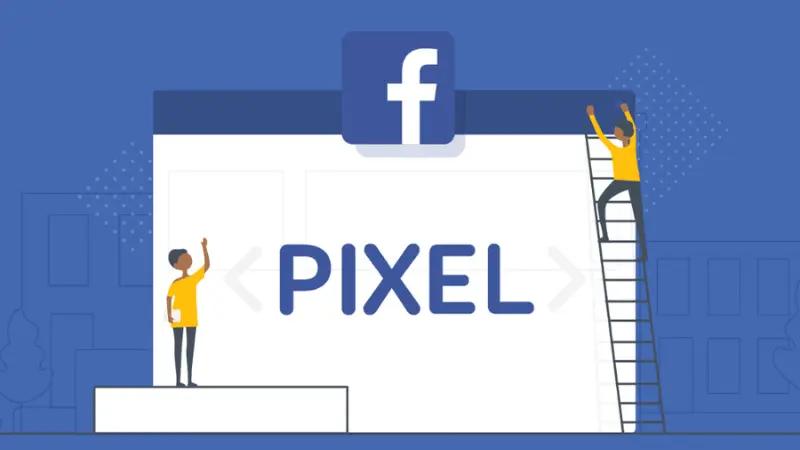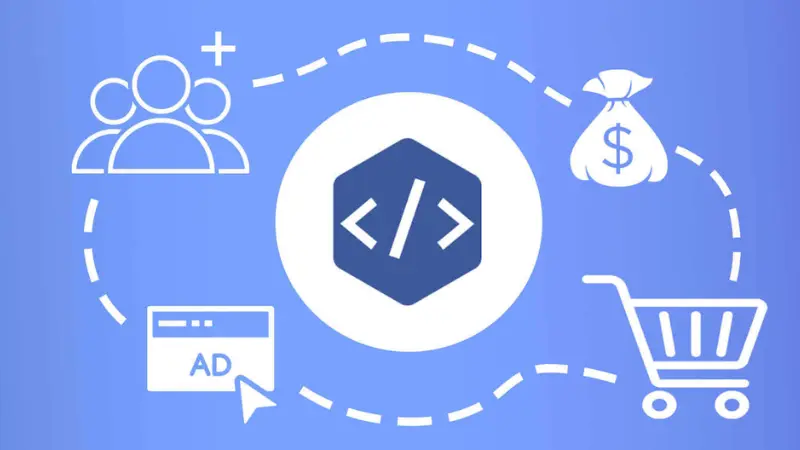Facebook Pixel is an invaluable tool for enhancing the effectiveness of a Facebook Ads campaign. By embedding a Pixel code snippet on your website, businesses can easily track user behavior and optimize their ad campaigns to reach the right target audience. In this article, Optimal Agency will guide you on how to create Facebook Pixel and embed it on your website.
| ☑️ Qualitiy account 💯, no worries about getting lock | ☑️ Immediate use, unlimited spending |
| ☑️ Best rental price | ☑️ Create campaign freely |
| ☑️ Many offers | ☑️ Optimized ads campaigns |
| ☑️ Consulting fast approved ads | ☑️ Safe, secure, effective and affordable |
| ☑️ Diverse services, accounts | ☑️ 24/7 technical support |
What is Facebook Pixel?
Also known as Meta Pixel is a JavaScript code snippet provided by Facebook for marketers to link a business’s website with the ads run on Facebook. Through this code, businesses can track the conversion activities users perform on their website after being led there by a Facebook ad.
It is a powerful tool that helps marketers monitor the activities of website visitors, measure performance, and create an audience base suitable for ad campaigns. By creating a Facebook Pixel and embedding it on your website, users can set up desired tracking. This allows for optimizing ad campaigns to reach the right target audience and increase conversion rates.
Why should businesses create Facebook Pixel?
Creating Facebook Pixel can bring the following benefits:

Track conversions
Facebook Pixel provides marketers with an effective conversion tracking tool. It allows you to easily measure how customers interact with your website after viewing an ad. This includes actions such as viewing a page, adding products to the cart, making a purchase, signing up,…
Based on the collected data, you can analyze the customer conversion journey across multiple devices. This helps you understand better how they interact with your brand and make purchasing decisions.
Additionally, it identifies customer behavior trends to calculate return on investment (ROI) for ad campaigns, evaluate campaign effectiveness, and optimize Facebook Ads costs.
Reach potential customers
Facebook Pixel helps gather data about people who have visited your website, including information about the products they viewed, the actions they took, and their personal information. Based on Pixel data, Facebook will create custom audience files of people who are likely to be interested in your products or services.
Create lookalike audiences
By creating a Facebook Pixel and based on the collected data, you can build lookalike audiences similar to your current website visitors to target ads more precisely. The new audience created has similarities with current customers based on traits such as behavior, interests, age,… Therefore, you will save time and effort compared to finding new potential customers.
Optimize ad campaigns’ effectiveness
By recording and tracking the behavior of visitors to the website, Pixel helps you make better decisions about potential customers. As Facebook’s machine learning becomes increasingly intelligent, Pixel is a tool that helps Facebook understand better the target audience you aim for on a specific website. This allows Facebook to deliver ads to the right target audience, optimizing the performance of ad campaigns.
Remarketing
The role of Pixel is to record and track the customer’s journey on the website. You can use the data this tool collects to remarket to those who have previously visited and interacted with your website. Remarketing is an effective strategy to increase conversion rates and revenue.
How to create Facebook Pixel?

Material to create Facebook Pixel?
To create a Facebook Pixel, you need the following material:
Facebook Business Account: You need this type of account to use Facebook Pixel. Your Facebook Business account must have management rights for the Facebook page or website where you want to install the Pixel.
Website information: You need the URL of the website where you want to install the Facebook Pixel. If you use a Content Management System (CMS) like WordPress, Shopify, or Wix, you need to know the login information for the system.
Also, you need access to the website to install the Facebook Pixel.
If you want to manually install the Facebook Pixel on your website, you need to have basic knowledge of HTML and JavaScript.
Google Tag Manager: You can use this tool to install the Facebook Pixel without needing to have web programming knowledge.
WordPress Plugin: If you use WordPress, you can install the Facebook Pixel plugin to automatically install the Pixel for your website.
Instruction to create Facebook Pixel
Access BM Facebook through this link: https://business.facebook.com/settings/. On the left side, select “All Tools”. Scroll down and select “Event Manager”, then choose the ad account you want to attach the Pixel to on the top right of the screen and click “Connect Data”.
Next, tick the box for data sources that allow attaching the Facebook Pixel. The sources you select will be where you want to track user activities. Tick the box for the web and click “Connect”.
Then, the screen will display the Pixel creation interface. Name your Pixel and create it. Check for partner integration by entering the URL of the website you want the Pixel to collect information from and click “Check”. Next, choose how the Facebook Pixel will connect to your website. Select “Conversion API and Meta Pixel” and click “Next”.
Next, set up conversion API to connect the activities on the web. Choose to set up manually, then click “Next” and select “Continue”. Here, choose the event type and select event details.
In the Customer Information Parameters box, tick the information you want the Facebook Pixel to track and click “Continue”. Review the setup process for the Facebook Pixel and click “Continue”. Follow the installation guide if needed, then click “Continue Pixel Setup”.
How to install Facebook Pixel on the website
After creating Pixel Facebook, you can install the Pixel code on website by following:
In the Pixel section of the Event Manager, select “Set Up Meta Pixel” and choose “Install Code Manually”. Click “Copy Code” and select “Continue”. Click “Continue” again and then go to the Pixel overview.
Then, you have two options: install the Facebook Pixel directly on your website or use Google Tag Manager. To install it directly, send the copied code to your website administrator to embed it on the website.
If you want to install via Google Tag Manager, go to this link: https://tagmanager.google.com/. Next, select “Tags” and click “New” to create a tag. Now, choose “Tag Configuration”. In the new window, scroll down and select “Custom HTML”.
Afterward, paste the copied code, select “Triggering”, choose “All Pages”, and click “Add”. Name the tag and click “Save”, then click “Submit” to register the tag.
By following the above instructions, you can successfully create and install a Facebook Pixel on your website. This allows you to track customer behavior, precisely target your audience, enhance the performance of your Facebook Ads campaigns, and optimize conversion rates and sales.
Please refer to:
- How to install like button on Fanpage properly?
- What is Google Merchant Center? How to register and use GMC
- The secrets to building a Landing Page with a high conversion rate
FAQ
After installing the Facebook Pixel on your website, ensure it is functioning. To do this, install the Facebook Pixel Helper extension for the Chrome browser.
Activate the extension and visit the website where the Facebook Pixel is installed. If the Pixel is working, the content “PageView” will be displayed when clicking on the extension.
There is no limit to the number of websites a Facebook Pixel can be attached to. However, for easier management, you should attach the Pixel to only one ad account. If you sell products within the same category and share a common customer base, multiple websites can use the same Pixel.